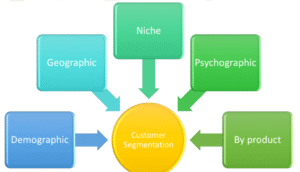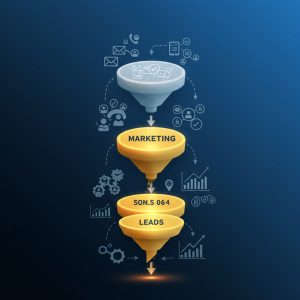Are Email Campaigns a Form of Inbound or Outbound Marketing?

Marketing strategies are traditionally categorized into two main approaches: inbound and outbound. Understanding where email marketing fits requires examining the defining characteristics of each methodology.
Defining Inbound vs. Outbound Marketing
Inbound marketing focuses on creating valuable content and experiences tailored to attract prospects to your business. It earns attention organically rather than interrupting potential customers with promotional messages. Key inbound tactics include content marketing, SEO, and social media engagement.
Outbound marketing involves pushing messages out to potential customers, often regardless of whether they’ve expressed interest. Traditional outbound methods include cold calling, TV advertisements, direct mail, and unsolicited emails.
Email Marketing: Where Does It Fit?
Email marketing occupies a unique position that can fall into either category—or sometimes both simultaneously—depending on several key factors:
When Email Marketing Is Outbound
- Purchased Lists: Sending emails to lists of contacts purchased from third parties who haven’t explicitly consented to receive your communications
- Cold Email Outreach: Emailing prospects who have had no prior interaction with your brand
- Unsolicited Promotional Blasts: Mass-sending promotional content to a broad audience without personalization or segmentation
- Interruption-Based Timing: Sending emails based on your schedule rather than user actions or preferences
These approaches align with outbound marketing principles because they initiate contact with prospects who haven’t sought engagement with your brand.
When Email Marketing Is Inbound
- Opt-In Subscribers: Sending emails only to individuals who have voluntarily joined your mailing list
- Content-Driven Newsletters: Delivering valuable, educational content that subscribers actively seek
- Triggered Response Emails: Messages sent in response to specific user actions (website visits, content downloads)
- Personalized Follow-Ups: Customized emails based on user behavior and demonstrated interests
- Lead Nurturing Sequences: Targeted content designed to guide prospects through their buying journey
These approaches align with inbound methodology because they respect user choice and provide value-based content to people who have indicated interest.
The Hybrid Reality of Modern Email Marketing

Most effective email marketing programs today operate in a hybrid space that incorporates elements of both inbound and outbound approaches:
Permission-Based Marketing
The foundation of modern email marketing is permission—subscribers have explicitly agreed to receive communications. This permission element aligns with inbound principles, even when the subsequent content might have promotional elements.
Segmentation and Personalization
Contemporary email marketing uses data-driven segmentation to ensure relevant content delivery. This personalization approach transforms what might otherwise be outbound-style promotional content into more inbound-aligned communications by matching content to recipient interests.
Value-First Approach
Successful email marketers prioritize providing value before making asks—an inbound marketing principle. This might include educational content, useful resources, or entertainment before promotional material appears.
Legal and Ethical Considerations
The classification of email marketing has legal implications as well as strategic ones:
- CAN-SPAM Act (US), GDPR (EU), and similar legislation globally have pushed email marketing toward inbound approaches by requiring consent and easy opt-out options
- Anti-Spam Provisions in these laws specifically target outbound-style email practices
- Preference Centers, allowing subscribers to control content type and frequency, represent an inbound approach to communication
Performance Metrics: Inbound vs. Outbound Email
The distinction between inbound and outbound email marketing approaches becomes clearly evident when examining their respective performance metrics.
Open rates tell a compelling story about recipient engagement. Outbound-style email campaigns typically achieve open rates of only 10-15%, reflecting recipients’ lower interest in communications they didn’t specifically request. By contrast, inbound-style emails enjoy significantly higher open rates, ranging from 20-40%, as these messages reach an audience that has actively chosen to receive them.
Click-through rates follow a similar pattern. Outbound approaches struggle with CTRs of just 1-2%, indicating that even when recipients open these emails, they’re less likely to engage with the content. Inbound email strategies perform substantially better with 2.5-5% click-through rates, demonstrating that relevant, permission-based content drives more meaningful engagement.
Unsubscribe rates also reveal important differences. Outbound email approaches experience higher unsubscribe rates as recipients opt out of communications they find irrelevant or intrusive. Inbound strategies maintain lower unsubscribe rates by delivering content that matches subscriber expectations and preferences.
Spam complaints present another critical distinction. Outbound email tactics generate more frequent spam reports from recipients who don’t recall opting in or find the content irrelevant to their needs. Inbound approaches receive fewer spam complaints thanks to their foundation in explicit permission and content relevance.
Conversion rates—perhaps the most important metric for marketers—show that inbound email strategies consistently outperform outbound approaches. Recipients are simply more likely to take desired actions when receiving content they’ve requested from brands they recognize and trust.
Finally, list growth patterns differ significantly between the two approaches. Outbound strategies can build email lists more rapidly through purchased contacts or aggressive sign-up tactics, but these lists contain lower-quality contacts with minimal brand affinity. Inbound list building happens more gradually but produces higher-quality subscribers who are genuinely interested in the brand’s content and offerings, resulting in better long-term performance.
Best Practices for Effective Email Marketing
Whether you lean more toward inbound or outbound approaches, certain practices improve effectiveness:
- Always Obtain Proper Consent: Even if taking an outbound-inspired approach, ensure recipients have opted in
- Segment Your Audience: Target communications based on demographics, behavior, and preferences
- Personalize Content: Go beyond using the recipient’s name—tailor content to their specific needs
- Provide Value First: Lead with useful information before promoting products or services
- Respect Recipient Preferences: Honor frequency and content type preferences
- Test and Optimize: Continually improve subject lines, content, and send times based on performance data
- Maintain List Hygiene: Regularly remove unengaged subscribers to improve deliverability
Conclusion: The Evolution Toward Inbound
While email marketing began primarily as an outbound channel, best practices have steadily shifted toward inbound methodologies. Today’s most successful email marketers blend the reach capabilities of outbound approaches with the respect for user choice and value provision central to inbound philosophy.
The most effective email programs recognize that the inbound-outbound distinction exists on a spectrum rather than as a binary classification. By understanding where different email tactics fall on this spectrum, marketers can strategically select approaches that align with their audience expectations, brand values, and business objectives.
Ultimately, the question isn’t whether email marketing is inbound or outbound—it’s how to thoughtfully implement strategies from both approaches to create communications that recipients genuinely welcome in their inboxes.
Learn more: Effective Outbound Marketing Strategies for Business Growth





